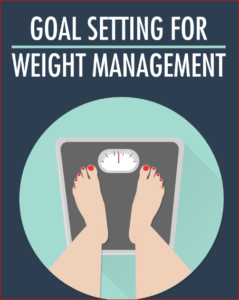How to Stay healthy, be happy live Longer?
There are several ways to stay healthy, be happy, and live longer. Here are some tips:
- Maintain a balanced and healthy diet: Include a variety of fruits, vegetables, whole grains, lean proteins, and healthy fats in your diet.
- Exercise regularly: Aim for at least 30 minutes of physical activity most days of the week. This can be anything from walking, jogging, swimming, cycling, or yoga.
- Get enough sleep: Adults should aim for 7-9 hours of sleep each night. Avoid using electronics before bedtime and establish a consistent sleep routine.
- Manage stress: Practice relaxation techniques like deep breathing, meditation, or yoga to manage stress levels.
- Cultivate positive relationships: Surround yourself with positive and supportive people who make you feel happy and loved.
- Find a purpose: Pursue activities and hobbies that give your life meaning and purpose.
By following these tips, you can increase your chances of staying healthy, being happy, and living a longer life.

Maintain a balanced and healthy diet:
Maintaining a balanced and healthy diet is essential for staying healthy, being happy, and living longer. Here are some tips for maintaining a healthy diet:
- Include a variety of fruits and vegetables in your diet: Fruits and vegetables are packed with vitamins, minerals, and antioxidants that can help protect against diseases.
- Choose whole grains: Whole grains contain more fiber and nutrients than refined grains. Examples include brown rice, whole wheat bread, and quinoa.
- Include lean proteins: Lean proteins like chicken, fish, and tofu are a great source of nutrients without added saturated fats.
- Limit saturated and trans fats: These types of fats can increase your risk of heart disease. Limit your intake of red meat, butter, and processed foods.
- Reduce your intake of sugar and salt: Too much sugar and salt can increase your risk of developing chronic diseases. Limit your intake of sugary drinks and processed foods.
- Drink plenty of water: Staying hydrated is important for overall health.
By following these tips and making healthy choices, you can maintain a balanced and healthy diet that promotes overall health and well-being.
Regular exercise:
Regular exercise is essential for staying healthy, being happy, and living longer. Here are some tips for incorporating exercise into your daily routine:
- Choose activities you enjoy: Whether it’s walking, cycling, swimming, or dancing, choose an activity that you enjoy to make exercise more fun.
- Aim for at least 150 minutes of moderate-intensity exercise each week: This can be broken down into 30 minutes of exercise on most days of the week.
- Incorporate strength training: Strength training can help build muscle mass and bone density, which is important for overall health. Aim for at least two days a week of strength training exercises that target all major muscle groups.
- Find ways to stay active throughout the day: Take the stairs instead of the elevator, walk or cycle to work, or take a brisk walk during your lunch break.
- Be consistent: Make exercise a habit by scheduling it into your daily routine and sticking to it.
By incorporating regular exercise into your daily routine, you can improve your physical health, boost your mood, and increase your chances of living a longer, healthier life.
Getting enough sleep/ Sleep for good health:
- Getting enough sleep is an essential part of maintaining good health and overall well-being. Sleep plays a crucial role in helping our bodies to repair and rejuvenate, as well as supporting our cognitive and emotional functioning.
- Research has shown that most adults need between 7-9 hours of sleep per night, although individual needs may vary. Getting enough sleep can help to improve concentration, memory, and mood, as well as reduce the risk of developing chronic health conditions such as obesity, diabetes, and heart disease.
- On the other hand, consistently not getting enough sleep can lead to a range of negative health outcomes, including increased stress levels, impaired immune function, and an increased risk of accidents and injuries. Chronic sleep deprivation has also been linked to a higher risk of developing mental health conditions such as depression and anxiety.
- To get enough sleep, it’s important to establish healthy sleep habits, such as going to bed and waking up at consistent times, creating a relaxing bedtime routine, and avoiding stimulants such as caffeine and screens before bed. If you are struggling to get enough sleep, it may be helpful to speak with a healthcare professional, as they can provide additional guidance and support.
Managing stress:
Managing stress is an essential part of maintaining good mental and physical health. Stress is a normal response to challenging situations, but when it becomes chronic, it can have negative effects on our well-being.
Here are some strategies to help manage stress:
- Identify the source of your stress: Try to pinpoint the specific situations or events that are causing you stress.
- Practice relaxation techniques: Techniques such as deep breathing, meditation, yoga, and tai chi can help to calm the mind and reduce stress.
- Exercise regularly: Exercise releases endorphins, which are natural mood boosters that can help to reduce stress.
- Get enough sleep: Getting adequate sleep is important for managing stress, as it can help to restore the body and mind.
- Eat a healthy diet: Eating a balanced diet that is rich in fruits, vegetables, and whole grains can help to support physical and mental health.
- Connect with others: Talking to friends, family, or a mental health professional can provide support and help manage stress.
- Set realistic goals: Setting realistic goals and breaking larger tasks into smaller ones can help to reduce stress and make tasks more manageable.
- Practice time management: Prioritizing tasks and setting limits on work or social commitments can help to reduce stress and prevent burnout.
- Learn to say no: Saying no to requests that are not a priority or that you cannot handle can help to reduce stress and prevent overwhelm.
Remember, managing stress is a lifelong process that requires ongoing attention and practice. By implementing these strategies and seeking support when needed, you can build resilience and manage stress more effectively.
Cultivating positive relationships:
Cultivating positive relationships is an essential part of maintaining good mental health and overall well-being. Positive relationships provide support, encouragement, and a sense of belonging, which can help to boost our self-esteem and promote positive emotions. Here are some strategies to cultivate positive relationships:
- Communicate effectively: Effective communication is the foundation of healthy relationships. This includes listening actively, expressing yourself clearly, and being respectful of others’ opinions and feelings.
- Practice empathy: Empathy involves understanding and sharing the feelings of others. Practicing empathy can help to build strong, positive connections with others.
- Spend quality time together: Spending time with friends and loved ones is important for building and maintaining relationships. This can involve doing activities together, sharing meals, or simply talking and catching up.
- Show appreciation: Expressing gratitude and appreciation for the people in your life can help to strengthen relationships and promote positive feelings.
- Resolve conflicts constructively: Conflicts are a normal part of any relationship, but it’s important to resolve them constructively. This involves working together to find a solution that is mutually beneficial and respectful of both parties.
- Be supportive: Offering support and encouragement to others can help to strengthen relationships and build trust.
- Practice forgiveness: Forgiveness involves letting go of past hurts and moving forward in a relationship. Practicing forgiveness can help to promote healing and strengthen relationships.
Remember, building and maintaining positive relationships takes time and effort, but the rewards are well worth it. By practicing effective communication, empathy, and support, you can cultivate strong, positive relationships that enhance your well-being and bring joy and fulfillment to your life.
Finding a sense of purpose:
Finding a sense of purpose can be a powerful way to enhance your overall well-being and satisfaction with life. Here are some strategies to help you find a sense of purpose:
- Reflect on your values and passions: Take some time to reflect on the things that are most important to you, as well as the activities and experiences that bring you the most joy and fulfillment.
- Identify your strengths: Consider your strengths and skills, and think about how you can use them to make a positive impact in the world.
- Set goals: Setting goals can help you to focus your energy and create a sense of direction. Make sure your goals are aligned with your values and passions.
- Explore new activities and experiences: Trying new things can help you to discover new passions and interests. Consider taking up a new hobby or volunteering in your community.
- Connect with others: Building relationships with others who share your values and interests can provide support and motivation as you pursue your purpose.
- Give back: Helping others can be a powerful way to find meaning and purpose in life. Consider volunteering or finding other ways to contribute to your community.
- Practice gratitude: Focusing on the positive things in your life can help you to cultivate a sense of purpose and meaning. Take time each day to reflect on the things you are grateful for.
Remember, finding a sense of purpose is a personal and ongoing process. It may take time to discover what truly brings you meaning and fulfillment in life. By exploring your values, passions, and strengths, setting goals, and connecting with others, you can find a sense of purpose that enhances your overall well-being and brings joy and fulfillment to your life.
Healthy Foods To Eat
There are numerous healthy foods to eat that can give you colorful nutrients and benefits. Some examples are:
Fruits and berries
They’re rich in fiber, vitamin C, antioxidants, and natural sugars. They can help boost your vulnerable system, lower inflammation, and satisfy your sweet tooth.
Some fruits and berries you can eat are apples, avocados, bananas, blueberries, oranges, and strawberries.
Eggs
They’re a complete protein source that contains all nine essential amino acids. They also give choline, iron, selenium, and vitamin B12. They can help make and repair your muscles, support your brain function, and keep you full for longer.
Spare flesh
They’re high in protein, iron, zinc, and vitamin B12. They can help maintain your muscle mass, support your vulnerable system, and transport oxygen throughout your body. Some spare flesh you can eat is funk bone, spare beef, and lamb.
Nuts and seeds
They’re high in healthy fats, fiber, protein, magnesium, and vitamin E. They can help lower your cholesterol, ameliorate your heart health, and regulate your blood sugar situation. Some nuts and seeds you can eat are walnuts, almonds, pistachios, sunflower seeds, and chia seeds
Vegetable walnuts, almonds, pistachios, sunflower seeds, and chia seeds
Vegetables
They’re low in calories but high in fiber, vitamins, minerals, and phytochemicals. They can help cover you from habitual conditions, ameliorate your digestion, and enhance your skin health. Some vegetables you can eat are broccoli, spinach, carrots, tomatoes, and mushrooms.
These are just some exemplifications of healthy foods to eat.
You can also include other foods similar to seafood, whole grains, legumes, dairy, fats and canvases, tubers, ginger, and dark chocolate in moderation. The key is to eat a balanced and varied diet that meets your nutritive requirements and preferences.
Unhealthy foods to avoid
Some unhealthy foods to avoid are Reused foods They’re frequently high in sodium, sugar, fat, and complements that can harm your health. They include chips, eyefuls, galettes, delicacies, soda pop, fast food, frozen reflections, and canned foods.
Trans fat foods
They’re made with incompletely hydrogenated canvases that can raise your bad cholesterol and lower your good cholesterol. They include afters, margarine, shortening, fried foods, and some baked goods.
Artificial sweeteners
They’re synthetic substances that can have negative goods on your metabolism, appetite, and gut bacteria. They include aspartame, sucralose, saccharin, and acesulfame potassium.
MSG( monosodium glutamate)
It’s a flavor enhancer that can beget headaches, nausea, and antipathetic responses in some people. It’s frequently set up in Chinese food, mists, gravies, and snacks.
High fructose sludge saccharinity( HFCS)
It’s a type of sugar that can increase your threat of rotundity, diabetes, and adipose liver complaint. It’s frequently set up in soft drinks, fruit authorities, cereals, and goodies.
These are just some exemplifications of unhealthy foods to avoid. You can also limit your input of impregnated fat, cholesterol, sodium, and ameliorated carbohydrates that can contribute to colorful health problems. The key is to eat further whole foods that are natural, fresh, and minimally reused.
Balanced Mess plan
Balanced Mess Plan A balanced mess plan provides you with the right quantum and variety of nutrients for your health and well-being. Some general tips to make a balanced mess plan are:
Use the Healthy Eating Plate as a companion
This is a visual tool that shows you how to fill your plate with different food groups. It recommends that you make half of your plate vegetables and fruits, a quarter of your plate whole grains, and a quarter of your plate protein. It also advises you to choose healthy canvases, drink water or thin potables, and limit dairy, juice, and sticky drinks.
Eat a rainbow of foods
Different colors of foods indicate different types of nutrients. For illustration, red foods like tomatoes and strawberries are rich in vitamin C and lycopene, while green foods like spinach and broccoli are rich in vitamin K and folate. Try to eat at least five portions of fruits and vegetables every day, and choose a variety of colors.
Include spare protein sources
Protein is essential for structuring and repairing your muscles, organs, and apkins. It also helps you feel full and satisfied. Some spare protein sources are fish, flesh, eggs, sap, nuts, seeds, tofu, and low-fat dairy products. Aim for about 0.8 grams of protein per kilogram of body weight per day.
Choose whole grains over refined grains
Whole grains contain further fiber, vitamins, minerals, and phytochemicals than meliorated grains. They also help regulate your blood sugar and cholesterol situations. Some whole grains are oats, brown rice, quinoa, barley, and whole wheat chuck or pasta. Aim for at least three servings of whole grains per day.
Limit added sugars, sodium, and impregnated fats
These are some of the unhealthy constituents that can increase your threat of rotundity, diabetes, heart complaint, and other habitual conditions. They are frequently set up in reused foods, fast foods, sweets, ignited goods, snacks, gravies, and dressings.
Read food markers precisely and avoid foods that have high quantities of these constituents. These are some general tips to make a balanced mess plan. You can also acclimate your mess plan according to your specific requirements, preferences, pretensions, budget, and life. You can use online tools or apps to help you track your input and plan your reflections. You can also consult with a registered dietitian or a healthcare provider for further substantiated advice.

Balanced meal plan example
Sure, I can give you an example of a balanced meal plan. Here is one that is based on the Healthy Eating Plate and provides about 2,000 calories per day1:
Breakfast: A bowl of oatmeal with fresh fruit and a cup of green tea.
Snack: A piece of fruit or a handful of nuts.
Lunch: A salad with grilled chicken and a whole grain roll.
Snack: A low-fat yogurt or a cheese stick.
Dinner: Roasted vegetables and quinoa with salmon.
Snack: A small square of dark chocolate or a cup of herbal tea.
This is just one example of a balanced meal plan. You can vary the foods and portions according to your preferences, needs, goals, budget, and lifestyle. You can also use online tools or apps to help you plan your meals. You can also consult with a registered dietitian or a healthcare provider for more personalized advice.
Benefits of following a diet plan
Following a diet plan can have numerous benefits for your health and well-being. Some of them are
Lowering your threat of habitual complaint:
Following a healthy diet can be a pivotal element in leading a healthy life, with one of the main benefits being lowering your threat of habitual complaint, similar to diabetes or cancer. Consuming a balanced blend of fruits, vegetables, legumes, whole grains, spare flesh, and fish can help lower that threat.
Strengthening your bones and muscles:
Following a diet plan that includes acceptable quantities of calcium, vitamin D, protein, and other nutrients can help you maintain strong bones and muscles. This can help with osteoporosis, fractures, and sarcopenia as you age.
Boosting your impunity and digestion:
Following a diet plan that includes probiotics, prebiotics, fiber, antioxidants, and other nutrients can help you support your vulnerable system and your gut health. This can help with infections, inflammation, and digestive disorders.
Supporting your brain function and mood:
Following a diet plan that includes omega- 3 adipose acids, B vitamins, iron, zinc, and other nutrients can help you ameliorate your cognitive function and internal health. This can help with madness, depression, anxiety, and stress. Helping you
https://www.internationalinside.com/health/how-to-eat-healthy/
http://abundantrawlife.blogspot.com/2014/03/ann-wigmore-1906-1994-her-life-and.html




